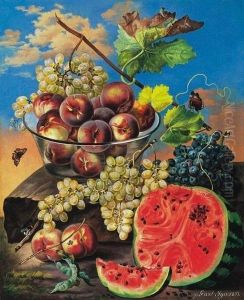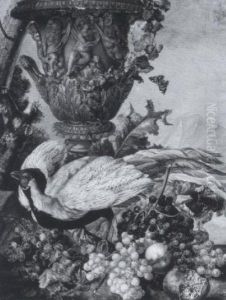Ignac Gaal Paintings
Ignac Gaal, a notable figure in the world of 18th-century European art, was born in 1755, in a period characterized by significant changes in the artistic and political landscapes of Europe. His contributions to the art world, though perhaps not as widely recognized as those of his contemporaries, provide a fascinating glimpse into the stylistic transitions and cultural dialogues of his time. Gaal's life and work were profoundly influenced by the Enlightenment, a movement that championed reason, individualism, and a skepticism of traditional institutions, which is reflected in the themes and techniques evident in his artistic output.
Gaal's early life and education in the arts remain somewhat obscure, a common issue when studying artists from this era. However, it is known that he was active during a period rich in artistic innovation, which saw the gradual shift from the ornate and dramatic Rococo style to the more restrained and morally imbued Neoclassicism. This transition mirrored the broader intellectual and cultural shifts of the time, with art moving away from the decorative towards the didactic. Gaal navigated these changes adeptly, incorporating elements from both movements into his work, which often explored classical themes and motifs with a contemporary sensitivity.
Throughout his career, Ignac Gaal developed a reputation for his landscapes and scenographic works. His landscapes, in particular, are noted for their meticulous detail and the sense of emotion they evoke, characteristics that align with the Romantic ideals that began to permeate European art and literature towards the end of his life. Gaal's ability to capture the sublime beauty of nature, with an emphasis on the awe-inspiring and sometimes terrifying aspects of the natural world, positioned him as a precursor to the Romantic movement that would dominate European art in the early 19th century.
Unfortunately, Gaal's life was relatively short; he died in 1801, at the age of 46. His death marked the end of a career that was on the cusp of the Romantic era, and as such, his works provide valuable insights into the transitional period of European art. Despite his premature death, Gaal's contributions have not been entirely forgotten. His landscapes and scenographic pieces continue to be studied for their aesthetic qualities and as documents of the evolving European landscape, both physical and cultural, at the turn of the 19th century. While Ignac Gaal may not be a household name, his work remains an important piece of the puzzle in understanding the complex tapestry of European art history.

